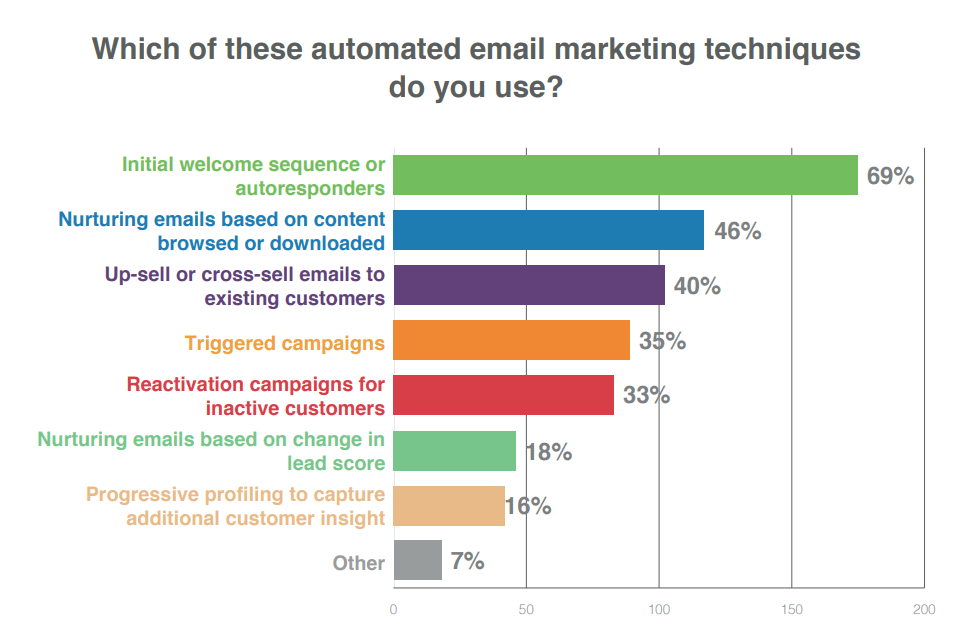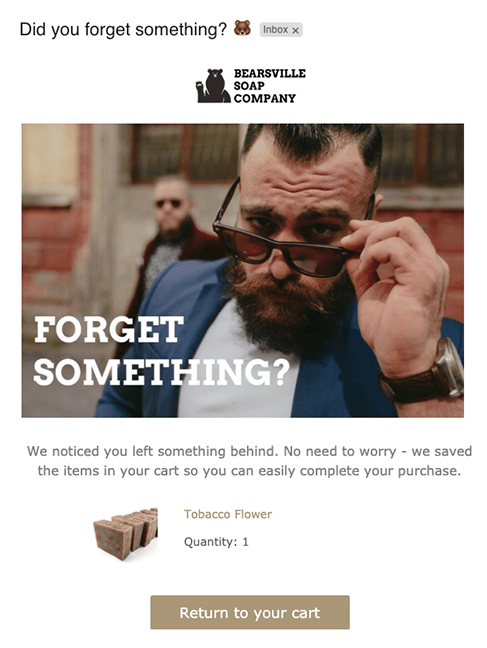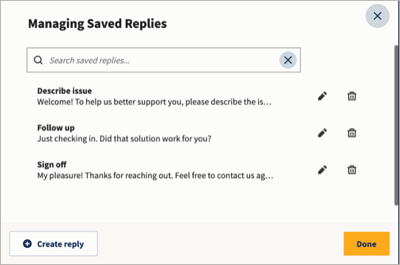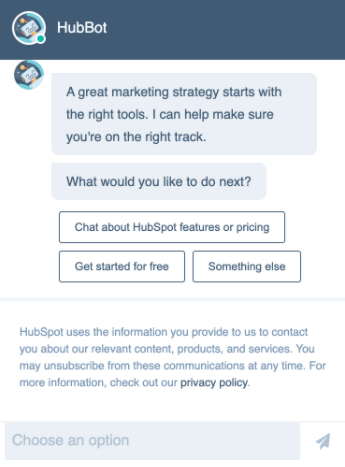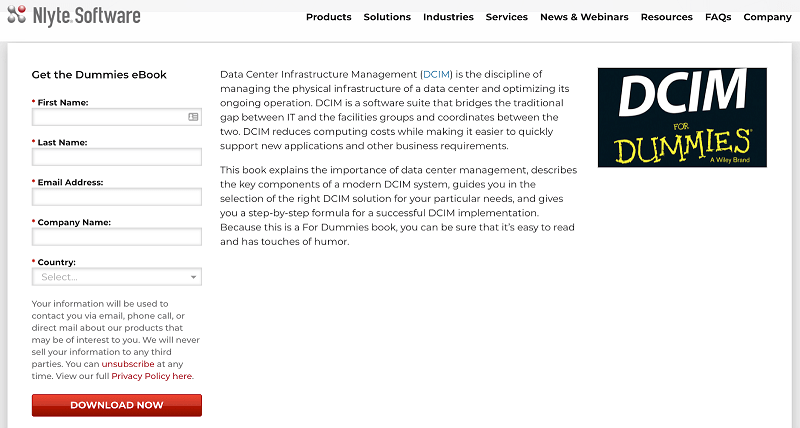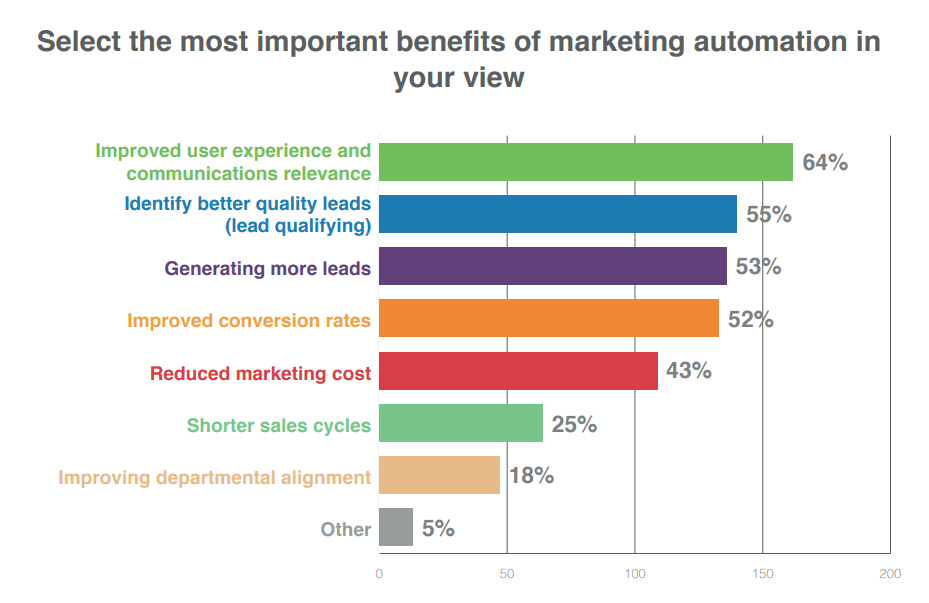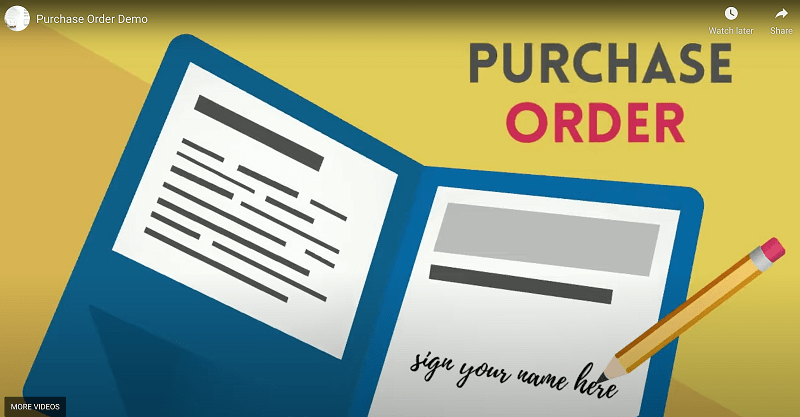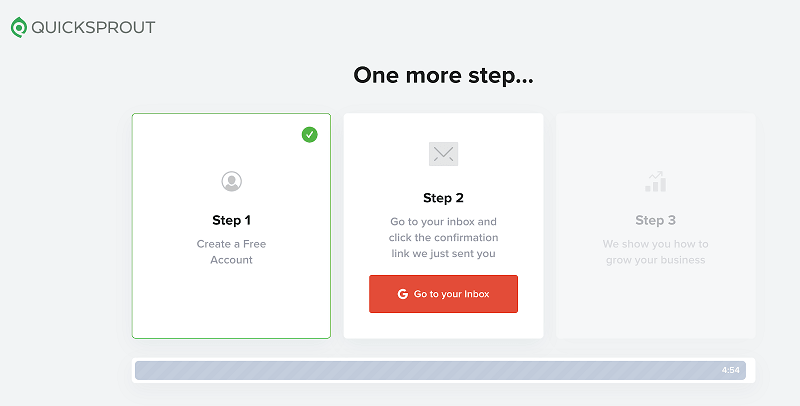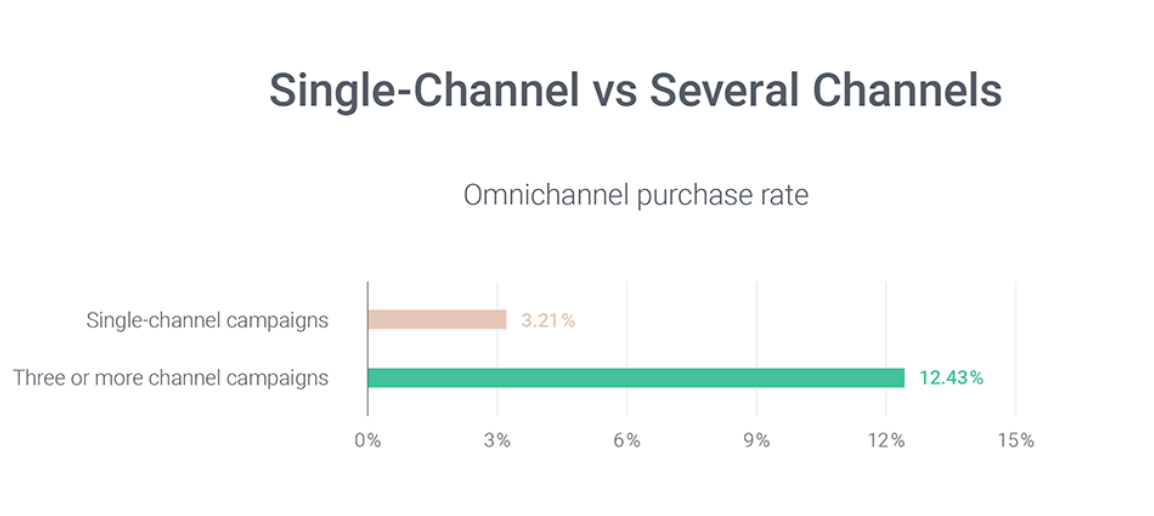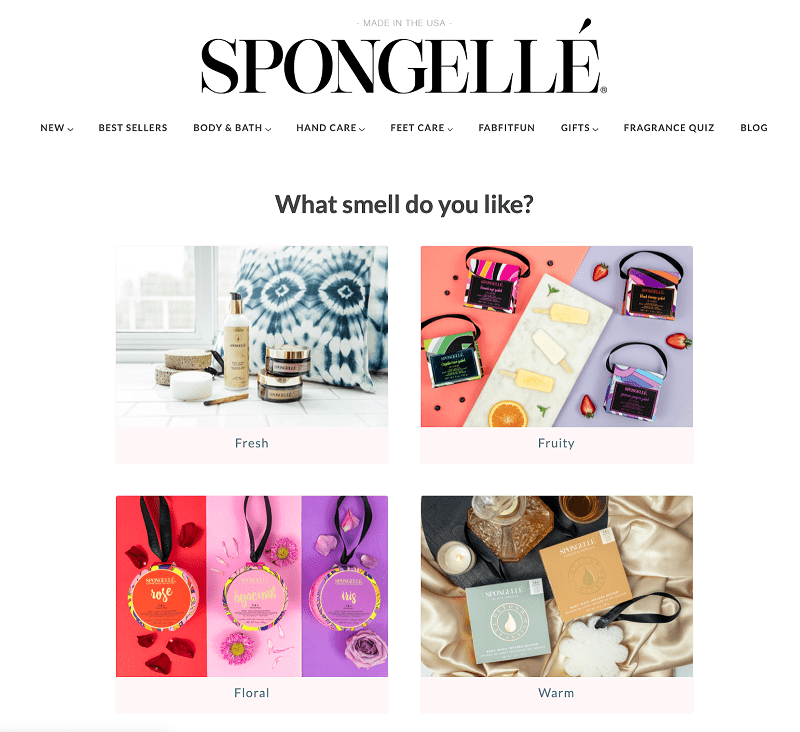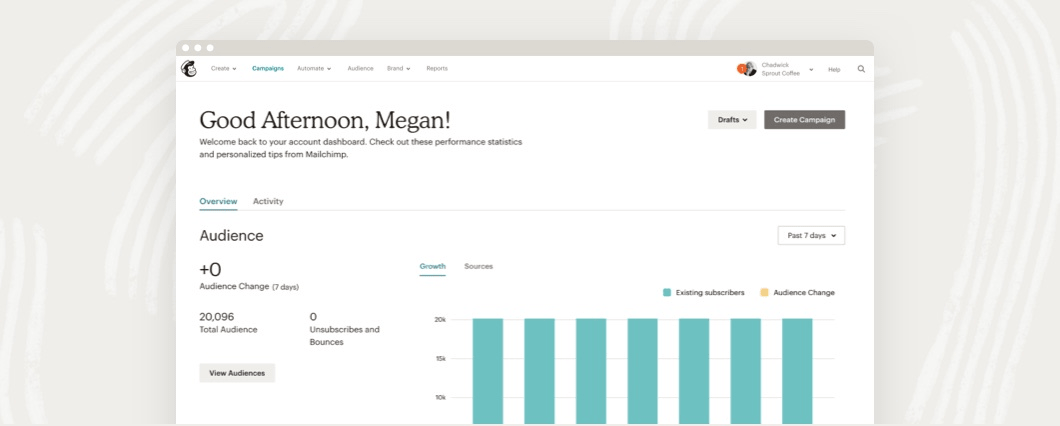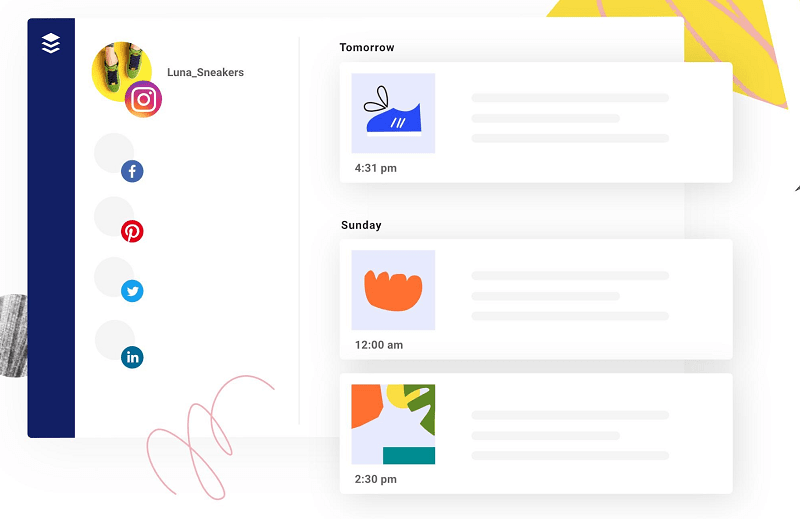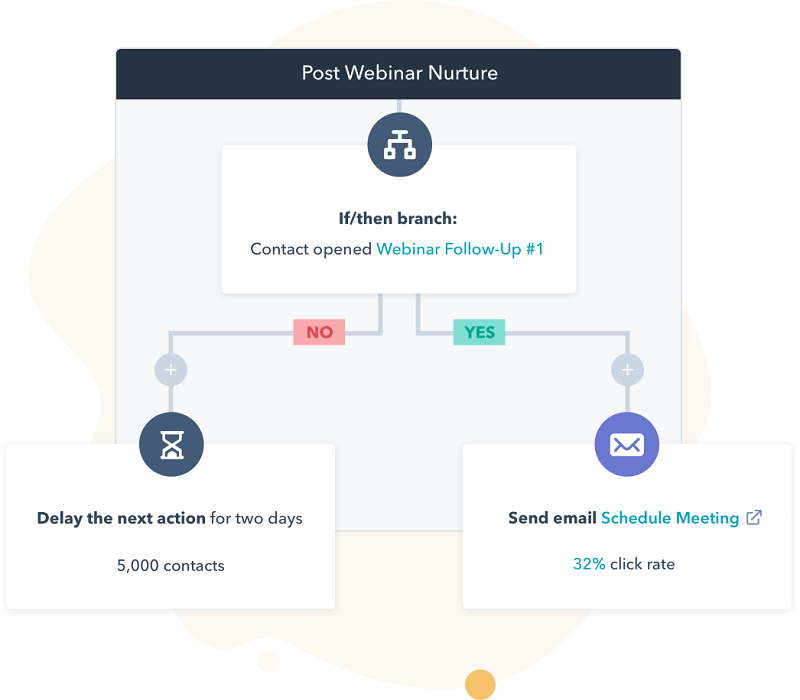What do marketers of today find challenging?
According to a recent report, marketers find it especially tough to calculate marketing ROI, create cohesive customer journeys, and engage customers in real-time.
Luckily, marketing automation helps to overcome all of these hurdles by enabling marketers to create seamless, omnichannel marketing workflows that provide a top-notch customer experience.
But how do you go about implementing marketing automation and what benefits does it bring?
Read on to discover everything you need to know about getting started with marketing automation.
What Is Marketing Automation? (with Examples)
Simply put, marketing automation refers to the process of automating marketing tasks so that the marketing workflow runs smoother.
In some circumstances, this allows marketers to execute campaigns at particular times to take advantage of key engagement windows. After all, timing is everything.
In other situations, marketing automation takes care of repetitive tasks. This frees up human hours for teams to work on more creative tasks without sacrificing customer service.
Marketing automation is also used to better personalize marketing campaigns by segmenting and filtering customers. By only showing relevant messaging to each customer, you improve the user experience and make customers feel as though the brand understands their needs.
Marketers apply automations across all aspects of marketing to capture and nurture leads, improve user experience, and increase customer retention.
Take email marketing, for example.
Email marketing automation is one of the most common methods of marketing automation. 69% of marketers automate a welcome series and 49% automate nurturing emails.
In fact, an email welcome series is a great example of how to capitalize on timing.
The premise is that customers are ‘hot’ to buy as soon as they sign up. As it turns out, this is true — the email welcome series has a 3.02% order rate. This is higher than any other form of email.
To make the most of this, email marketers often include a promotion in the initial welcome email series to convince customers to buy straight away.
Cart abandonment emails are also an effective method of using marketing automation to take advantage of timing.
These emails are sent when customers click off a website without buying anything, despite putting items in their cart.
Cart abandonment emails have an open rate of 41.18% and a click-through rate of 9.5%.
To increase urgency and convince customers to convert, try including an extra discount to persuade buyers to purchase what’s in their cart.
Marketing automation is also used in social media.
Marketers mainly use marketing automation tools to schedule social media posts to release during periods of high customer engagement. For example, marketers can use an Instagram scheduling tool to keep their customers up to date with the latest developments.
Using social media analytics, marketers can work out when their audience is most active and release social media posts at these times via tools like Hootsuite and Buffer.
Not only does this save the marketing team manual labor hours, but it also means marketers can post on a global schedule, releasing posts 24-hours a day.
Marketing automation is also used for social media community engagement.
One way to do this is to use marketing automation tools to offer auto-replies to direct messages (DMs) and comments. Tools like Hootsuite’s semi-automated ‘Saved Replies’ are very useful to achieve this.
Chatbots are another common example of marketing automation.
While chatbots are commonly seen as a customer service tool, they are also a great way to drive sales. In fact, businesses claim that chatbots increase sales by 67%, with a chatbot interaction initiating at least a quarter of those sales.
Use chatbots to automate marketing by driving customers to relevant products and offering personalized deals based on the information given.
Lead magnets are great examples of inbound marketing automation.
By encouraging customers to download a guide, free demo, or piece of gated content, you’re able to generate leads and automatically segment them based on their interests.
You can use this segmentation for targeted marketing campaigns in the future.
For example, look at this free guide lead magnet by DCIM software provider, Nlyte.
When visitors download this free guide, Nlyte automatically segments these leads into a funnel for DCIM beginners. That way, Nlyte knows to tailor marketing messages to novice readers.
Other examples of marketing automation include:
- Customer quizzes
- Onboarding and offboarding workflows
- Retargeting campaigns
- Ad campaigns
What Can Marketing Automation Do for Your Business
There are countless benefits to automating your marketing tasks, from saving time to increasing campaign effectiveness.
Here are some of the top reasons for deploying marketing automations.
1. It saves time
Firstly, automating marketing tasks saves the sales and marketing team time on repetitive tasks.
For example, imagine how long it takes to send individual order confirmations to each customer every time they purchase something.
Instead, it makes much more sense to automate this process so an email immediately hits the customer’s inbox as soon as they’ve completed their purchase.
Want to know what else works the same way? Payroll software! Yep. It takes care of things like tracking hours and processing paychecks, so you’re not stuck doing it manually every week. With it, you can have more time for whatever stuff you consider important. Plus, it keeps things accurate, so you don’t have to worry about pay errors sneaking in.
As per Adestra’s Marketer vs. Machine report, 74% of marketers believe that the biggest advantage of marketing automation is that it saves time. Automating your social media posts and ads can help you save 6 hours a week on average.
In the crucible of modern marketing, the mandate to save time transcends mere clock-watching; it’s about unleashing the latent genius of human creativity. By emancipating marketers from the drudgery of repetitive tasks, automation conjures a wellspring of cognitive surplus, ripe for strategic alchemy.
This temporal windfall allows nimble minds to plumb the depths of consumer psyche, weaving narratives that captivate and campaigns that resonate with primal intensity. The hours wrested from routine become the raw material for innovation, fueling a perpetual cycle of upskilling and adaptation.
In this paradigm, the ability to save time through automation isn’t just a metric—it’s the fulcrum upon which marketing mastery teeters, enabling brands to pirouette gracefully amidst the maelstrom of digital evolution, where nanoseconds can cement or shatter brand allegiances.
The efficient planning and organizing schedule social media posts is of utmost importance for businesses to maintain a consistent online presence across various platforms.
You can attain your goal without the hassle of manual monitoring. Utilizing data analytics, businesses can analyze user engagement patterns to identify the optimal times for publicating.
This method maximizes audience reach and the impact of each publication. It also promotes productivity and enables companies to create a more comprehensive and flexible social media strategy.
By scheduling posts to coincide with particular events or trends, businesses can establish a dynamic and captivating narrative that evolves with their audience’s interests and behaviors. This approach increases engagement, solidifies the brand’s reputation, and fosters a sense of trust among its followers.
2. It reduces marketing costs
43% of marketers say that automation reduces marketing costs. It does this in a few different ways.
For more detailed strategies on managing marketing expenses, explore these insights on marketing costs and how to optimize your budget effectively.
Firstly, marketing automation saves the team time, which means you’re no longer paying your marketing team to complete menial tasks or to manually follow-up with customers.
Secondly, marketing automation scales what your existing team can achieve. For example, imagine that a marketer had to send a birthday email to every customer by hand.
Now, the marketer writes the email once. The automation tool automatically personalizes the email for every customer and sends it on the appropriate date. This means thousands of birthday emails can be sent with a fraction of the work.
Lastly, marketing automation makes it easier to personalize content, which can double the effectiveness of campaigns. This means fewer touchpoints and less marketing effort to convert customers. Efficient marketing project management can streamline campaign execution and improve overall effectiveness.
3. It’s easier to personalize campaigns
There’s a reason 30% of B2C companies are using behavior-based website personalization — it increases conversions by more than two times.
Wouldn’t it be amazing if you send personalized content to your potential buyer that correlates with the actions taken by them on your website? This is the power of marketing automation.
Using marketing automation tools, you can segment data captured from leads and target your campaigns to those leads based on their personal data as well as the actions they took on your website/emails.
In the era of data-driven marketing, savvy businesses are turning to marketing automation software to supercharge their campaigns and leave competitors in the dust. This digital Swiss Army knife doesn’t just streamline your workflow; it transforms your entire approach to customer engagement. Picture a world where your campaigns adapt in real-time, responding to each prospect’s unique journey with laser-focused precision.
4. It scales lead generation and qualification
53% of marketers agree that marketing automation generates more leads, while 55% say it helps to identify better quality leads.
Traditionally, marketing and sales teams would need to identify and qualify leads through sales calls. This was ineffective, costly, and time-consuming.
With marketing automation, marketers can use lead magnets that collect relevant data to help them identify leads most likely to buy and qualify their needs. This helps to personalize lead nurturing tactics to convince these leads to convert.
5. It increases conversions and speeds up sales
A quarter of marketers say you can speed up your sales cycles with marketing automation. By automating personalization, you can better target customers with the content and products they need, convincing them to purchase quicker.
What’s more, marketing automation increases sales. Over half of marketers claim that automating marketing tasks increases conversions.
This is because it’s simpler to scale operations and approach more leads at once, while also tailoring those campaigns to meet customer needs.
6. It improves user experience
Half of all customers assume that companies will anticipate their requirements and deliver personalized solutions to meet those needs.
Marketing automations, such as customer quizzes, cart abandonment emails, and tailored recommendations are an excellent way to meet customers’ expectations for a personalized experience.
Not only that, but marketing automations provide a sleek, omnichannel experience, where customers can move between channels and still receive a coherent encounter with the brand wherever they are.
Think about it—when a brand like Moosend nails that seamless transition across platforms, it’s like they’re reading your mind. It creates this magnetic connection where you’re not just buying a product; you’re buying into an experience that feels tailored just for you. That’s the kind of loyalty every business dreams of building.
This is why 64% of marketers agree that marketing automations improve the user experience.
How to Set up a Marketing Automation Campaign
Wondering how to get started with marketing automation? Here’s a quick four-step guide.
1. Choose your marketing automation tools
To automate your marketing workflows, you need to consider all the tools needed in the different stages of that process.
Ask yourself which tools you’ll use to:
- Build lead capture, lead nurture, and customer retention campaigns
- Segment, manage, and store lead and customer data
- Test campaigns
- Schedule campaigns
- Track and analyze campaign performance
2. Create lead generation campaigns
Decide which kind of lead campaigns you’ll devise to capture leads.
Typical lead capture campaigns include:
- Popups
- Advertising campaigns
- Gated content
- Newsletters
- Events and webinars
- Free trials and demos
- Discounts and deals
3. Build lead conversion campaigns
How will you nurture your leads to encourage them to convert into paying customers?
Consider the barriers that stop customers from making a purchase.
For example, let’s say you have a highly complex technological solution. Customers may be finding it difficult to understand what you’re offering.
To combat this, you’ll need to create campaigns that educate your audience on how to use your product or solve a problem that they’re having. You could do this in several different ways including building an online course, offering a free webinar, an email automation series, or anything that brings them along in your funnel to potentially convert to a paying customer.
Take business process automation software, frevvo, for example.
To help customers understand why they need this software, frevvo has produced simple animated videos to explain the different use cases for the technology.
Other popular lead nurturing campaigns include:
- Email marketing
- Content marketing
- Social media marketing
- PPC adverts
- Chatbots
- Discounts and deals
4. Analyze and improve marketing automation over time
96% of companies said that automated analytics and reporting were important or crucial for their company.
Not only is analytics data vital to understanding how well campaigns are performing, but it also helps marketers strategize future campaigns.
Figure out which key performance indicators (KPIs) you’ll measure and how you’ll track and analyze these.
Best Marketing Automation Practices — Tips and Tricks
The point of automating your marketing workflows is to improve the buying experience to generate higher conversions with less work for both the customer and the marketing team.
Use these tips and tricks to achieve this.
1. Know who you’re targeting
It’s vital to understand who your target buyer personas are so that you can begin to tailor the marketing journey to those people. You’ll need to understand their characteristics, behaviors, and interests.
After all, there’s no point in creating a super-slick technologically-driven marketing funnel if you’re selling knitting patterns to senior citizens. They won’t understand it and they’ll be turned off from buying.
Make sure you understand who you’re targeting so you can create content and buyer journeys that appeal to their interests and work with their behaviors.
2. Streamline buyer journeys
Figure out the bottlenecks your buyers are stuck at and then find ways to automate the processes to overcome these buying barriers. Ask yourself:
- What would make the buying process faster?
- What would make the buying process easier?
- Where are customers getting stuck?
For example, check out how Quicksprout makes it easier to confirm your membership.
Scheduling appointments requires careful handling to optimize client interactions and facilitate timely follow-ups. Automating this process reduces reliance on manual coordination, leading to more streamlined and organized workflows. It also strengthens lead management by connecting prospects with the right team members at the optimal moment, ultimately boosting engagement and driving higher conversion rates.
In order to remove obstacles that might hinder a customer’s path to purchase, think about adopting an online scheduling calendar tool such as Bookafy.
This software simplifies the process of booking appointments, facilitating easier interactions between prospects and your enterprise, leading to an uptick in successful conversions.
As a result, you not only better the client experience but also allocate more bandwidth for your sales and customer care staff to address intricate issues.
Offering new entrepreneurs help with complex business processes, like payroll services, PEO providers, and CRM software, Quicksprout measures its conversion rates on the number of new subscriptions.
Looking to smooth out your business operations? Payroll software might just be your secret weapon. It’s not just about crunching numbers faster – this tech marvel can shake up your whole management approach. Sure, it’ll save you from drowning in paperwork and those pesky human errors, but here’s the kicker: it actually boosts face-to-face time. Sounds crazy, right? But think about it.
To make subscription easier, Quicksprout uses marketing automations to take the customer directly to their inbox to complete the confirmation process. This reduces the drop-out rate between signing up and confirming the subscription.
3. Personalize the experience
Your customers are expecting a personalized experience where your solutions speak to their exact problems and suit their lifestyle.
This means you need marketing automations that segment your audience based on behavior, characteristics, and interests.
From here, automations should direct targeted content to the different segments to solve relevant problems.
4. Use a multi-channel approach to marketing automation
If you’re only working on a single platform, you’re losing conversions. Nowadays, 69% of buyers expect a connected experience across channels.
Purchase rates are 287% higher when you use three or more channels to market your product. You can, for example, work with online newspapers through sponsored articles and affiliate marketing to promote your products like this one about the best LegalZoom alternatives. Brands mentioned will compensate GrowthBoost for every click on the links. But, this strategy will help those resellers reach a bigger audience.
Consider using automations to deliver coherent campaigns that reiterate your marketing message across different platforms without repeating yourself.
5. Make the experience interactive
Marketing automations can improve your users’ experience by creating a more interactive feel.
Not only does this engage customers more intimately, but it can also help you to personalize your service.
For example, look at how perfume brand, Spongelle, matches customers with their ideal perfume.
With a simple quiz, Spongelle automates recommendations and provides an engaging customer experience.
Marketing Automation Tools
Over half of all companies are using marketing automation software to improve their marketing strategy.
But what marketing automation tools do you need? Here’s a list of the best tools on the market:
Lead management
Lead management tools should help you build sales and marketing funnels that help you capture leads and manage those new contacts.
ClickFunnels is a great tool to build lead-capturing landing pages and nurture inbound leads with basic email marketing.
Jumplead helps you turn website visitors into leads. You can use the tool for lead tracking, landing page creation, behavior-triggered actions, email marketing, and analytics.
LeadSquared helps you align your sales and marketing teams by enabling you to capture and nurture all forms of inbound leads, including those from sales calls, inbound emails, chatbots, and more.
LeadSquared also integrates seamlessly with conversational AI chatbot, enhancing your customer interactions by providing instant responses and personalized engagement. Whether it’s handling customer queries, scheduling appointments, or qualifying leads round the clock, our platform empowers your team to deliver exceptional customer experiences through advanced AI-driven conversations.
Another popular lead management software is HubSpot, which offers a range of tools to help you capture, nurture, and close leads. With HubSpot, you can create landing pages, automate lead nurturing campaigns, track website visitors, and get detailed analytics on your lead generation efforts. It also integrates with a range of other tools, such as Salesforce, to help streamline your sales and marketing processes.
Email marketing
Email marketing is one of the most effective ways to nurture your leads. The tools can help you create, schedule, and trigger email campaigns.
Mailchimp is a popular email marketing tool that offers a comprehensive free package, beautiful email templates, and sleek drag-and-drop editor, and excellent segmentation tools.
(Image Source)
Moosend is another excellent email marketing tool that allows you to optimize email campaigns, create landing pages, and set up behavioral-triggered messages. The drag-and-drop editor makes it especially easy to use.
Social media marketing
If you’re looking for a social media scheduling tool to help you schedule your social media posts, Planly, Hootsuite and Buffer are three of the best.. Both tools also offer a comprehensive analytics dashboard to help you track your KPIs.
(Image Source)
To speed up social media content creation, check out MissingLettr. This tool scrapes your blog content to create social media posts for an omnichannel experience.
Marketing workflows
HubSpot is the most well-known tool for creating fully-automated all-in-one marketing workflows. The tool has powerful automation for blogging, social media, email, and advertising campaigns, along with sophisticated analytics and revenue attribution reporting. This tool also works as a full customer relationship management (CRM) platform, making personalization super easy.
(Image Source)
Another great tool for automating marketing workflows is GreenRope. Combining CRM functionalities and marketing workflows, this comprehensive dashboard also features lead scoring, predictive analysis, SMS marketing, and calendar booking tools.
Conclusion
Marketing automation has the power to save you time and money while driving conversions and improving the customer experience.
Remember, always personalize your content and approach buyers across multiple platforms with coherent marketing messages.
If you need more help automating your marketing strategy, don’t hesitate to contact the experts at KyLeads or leave a comment on this article.
About the Author
Brad Smith is the CEO at Wordable.io and the Founder of Codeless (a content production agency). His content has been highlighted by The New York Times, Business Insider, The Next Web, and thousands more.
